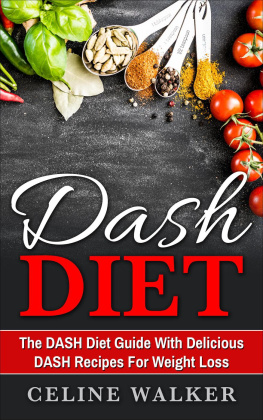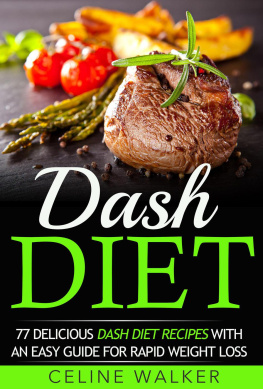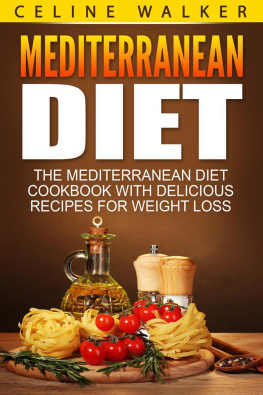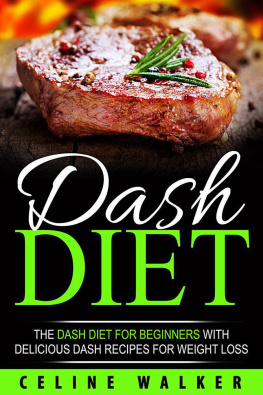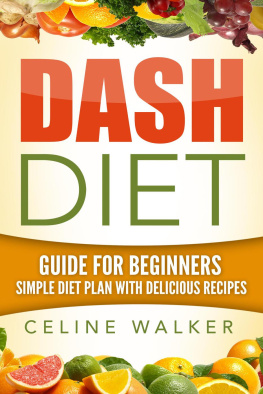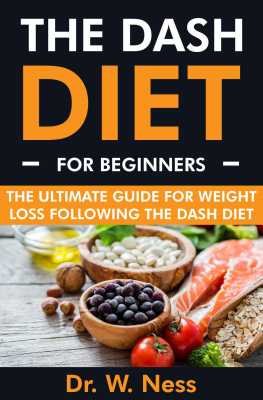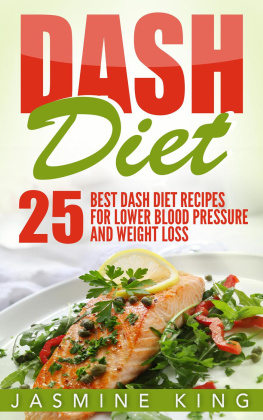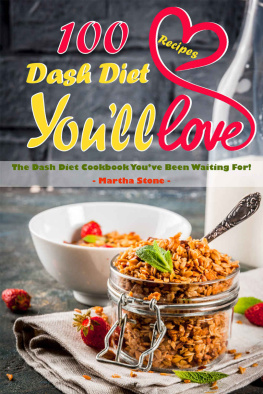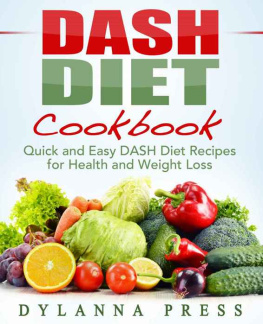DASH Diet
The DASH Diet Guide with Delicious DASH Recipes for Weight Loss
Copyright 2017 by Celine Walker
All rights Reserved. No part of this book may be reproduced in any form without permission in writing from the author. Reviewers may quote brief passages in reviews.
Disclaimer
No part of this publication may be reproduced or transmitted in any form or by any means, mechanical or electronic, including photocopying or recording, or by any information storage and retrieval system, or transmitted by email without permission in writing from the publisher.
While all attempts have been made to verify the information provided in this publication, neither the author nor the publisher assumes any responsibility for errors, omissions or contrary interpretations of the subject matter herein.
This book is for entertainment purposes only. The views expressed are those of the author alone, and should not be taken as expert instruction or commands. The reader is responsible for his or her own actions.
Adherence to all applicable laws and regulations, including international, federal, state and local laws governing professional licensing, business practices, advertising and all other aspects of doing business in the US, Canada, UK or any other jurisdiction is the sole responsibility of the purchaser or reader.
Neither the author nor the publisher assumes any responsibility or liability whatsoever on the behalf of the purchaser or reader of these materials. Any perceived slight of any individual or organization is purely unintentional.
Introduction
Are you suffering from high blood pressure? Or does your familys health history reveal that you have high risk of developing it? If so, then you need to take charge of your health and habits now so that you can extend the length and enhance the quality of your life. The best and easiest way to begin stabilizing your blood pressure levels is by following the DASH Diet.
DASH, or Dietary Approaches to Stop Hypertension , is a simple, straightforward and practical guide on how to prevent or treat high blood pressure. The guidelines are so simple that you can immediately start applying it right now, and this book is here to help you out.
In this book, you will find a quick and easy guide to following the DASH diet. You will also gain 50 delicious DASH-approved recipes for not just improving your blood pressure levels, but also helping you to lose weight the healthy way. You will find recipes for breakfast, main dishes be they for lunch or dinner side dishes that can also serve as snacks, and desserts.
The great thing about these recipes is you can find the exact amount of grams per serving size and the nutritional information per serving. That way, you will know exactly how much protein, fat, and carbohydrates you are consuming, and you can tweak the ingredients depending on your health goals. In addition, all of the recipes in this book call for ingredients you can conveniently find in your local grocery store or farmers market. You can also easily choose alternatives to the ingredients in times when they are not in season.
So take control over your quality of life now by implementing the DASH diet. Start by turning to Chapter 1.
Chapter 1 A Short Guide to the DASH Diet
D ASH is the acronym for Dietary Approaches to Stop Hypertension, and it means exactly that. If you have a family health history of hypertension, suspect that you have it, or that you are diagnosed with it, then it is best for you to adopt the DASH diet into your lifestyle right now.
But before we head on over to discussing the DASH Diet guidelines, let us first take a look at what hypertension is.
What is Hypertension?
Hypertension, otherwise known as high blood pressure, is a health disorder in which the blood pressure stays at an abnormally high level, or at least 140/90 mm Hg. It affects almost a third of the entire adult population in the United States and in other countries that follow the conventional western type of diet one that is rich in sodium and fat.
The worst part about hypertension is that some people are unaware they have it. Thus, they would continue to eat these unhealthy foods and would stop only when more a more critical health issue caused by their underlying hypertension arises, such as stroke, coronary artery disease (or CAD), angina, and heart failure.
While these facts presented to you are not meant to scare you, they are there to help inspire you to start the DASH diet, which is low in sodium and fat and rich in healthy, naturally sourced proteins and carbs.
DASH Diet: Regular and DASH Sodium
There are two types of DASH diet, one of which is called the Regular DASH Diet and the other, DASH Sodium.
The idea is simple: if you are someone who do not have hypertension but may be at risk of it due the results of a blood pressure test, or due to your familys health history of it, then you can follow the Regular DASH Diet. In this diet, you can still incorporate sodium into your life such as by using small amounts of Himalayan sea salt and other healthier salts. The salt to avoid is table salt.
On the other hand, if you are already diagnosed with hypertension, then you need to follow the DASH Sodium. In this diet, you should avoid sodium entirely and make sure that your meals do not contain any salt unless they are a natural component of a particular ingredient. Those who are on the DASH Sodium should also control their intake of foods naturally high in sodium, such as artichokes, beets, carrots, turnips, raw celeriac, wax gourd, chard, celery, sweet potatoes, spinach, and collards.
If you are not sure yet as to whether you have hypertension or not, you should visit your doctor to have yourself tested. What he will do is to review your medical history first, then conduct a physical examination. Aside from a blood pressure reading, you may also be advised to take a cholesterol test together with blood tests and a urine test.
Normal blood pressure is one that is below 120/80 mm Hg. If yours has a 120 to 139 mm Hg systolic pressure or 80 to 89 mm Hg diastolic pressure, then you are considered to have prehypertension, or a high risk of developing hypertension. If your systolic pressure is between 140 and 159 mm Hg and your diastolic pressure is 90 to 99 mm Hg, then you have Stage 1 Hypertension. Those with Stage 2 Hypertension have a systolic pressure of at least 160 mm Hg or a diastolic pressure of at least 100 mm Hg.
Take note that those over the age of 60 years old have significantly higher levels of systolic reading, thus is it not unnatural to have a diastolic pressure that is less than 90 mm Hg and a systolic pressure of at least 141 mm Hg if you are around that age.
That being said, those who are in the Prehypertension stage should follow the Regular DASH diet and those who are in Stage 1 or 2 Hypertension should strictly follow DASH Sodium.
D ASH Diet Guidelines
The DASH Diet is far from restrictive when it comes to the variety of foods you can eat. There are so many healthy vegetables, fruits, nuts, seeds, and other delicious, low-sodium and low-fat meals you can enjoy every day. And when you are in doubt, then just call to mind the following five simple DASH Diet guidelines:
Next page
